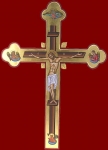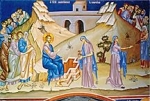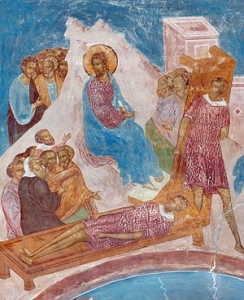 The True Cross
The True Cross
Month: May 2009
Enlightenment

Paralyzed
This week our Church commemorates the Sunday of the Paralytic. The Gospel reading is taken from St. John 5, 1 – 15. One thing struck me after I read this passage. Aren’t all of us paralyzed in one way or the other? The young man in the Gospel account was physically impaired for many years, but he never gave up on the possibility of being healed. He waited by the pool for thirty-eight years for his deliverance.
Many of us who are paralyzed spiritually, emotionally or psychologically sit by the side of life. There may be limitations to our understanding, we may not be able to move past a scar on our heart, perhaps we cannot forgive some hurt we have experienced. Do we live our life trying to be healed or trying to ignore our malady? The question that Christ asked the young man is very pertinent to our own circumstances or powerlessness, “Do you want to be healed?” At first, the obvious response would be an indignant, “of course,” but many of us wear our debilitation as a badge of identity. Not too many weeks ago, we were anointed with the sacrament Holy Unction. While we were being anointed, the invocation reminded us that Christ is the physician of our souls and bodies. Souls and bodies, we are told that the young man needed physical healing. Nonetheless, waiting next to the pool for thirty-eight years to be healed must have left emotional scars on the young man. As we analyze all the miracles of Christ, He heals each person whom He encounters; provided that the person turns him in faith. The healing always restores the person to wholeness. So, it is understood that all aspects of this paralyzed man was healed.
Turning to Christ in faith is not a magic formula. Wholeness involves the restoration of our spirit. This restoration may impart to us the capacity to recognize our paralysis, to understand its cause and to start on a path to wellness. Its possible physical limitations remain with us to illumine our heart to overcome the deeper emotional weakness. The healing of Christ is a mystery as is the opportunity to witness His love in our life. Our witness, like the young man’s in the temple, is the acknowledgement that God is working to transform our heart.
]]>
